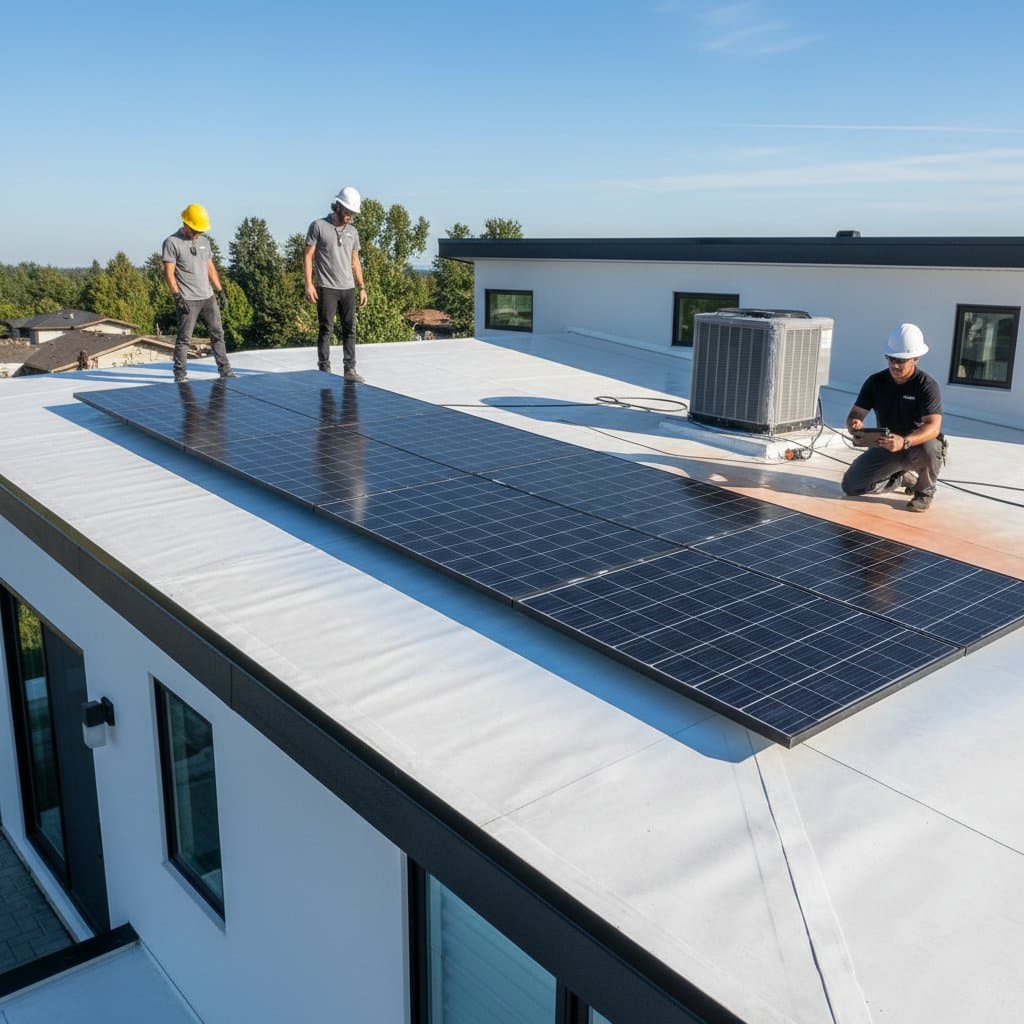Slash AC Bills with Cool Roofs Before Solar Installation
Homeowners often consider solar panels as the primary solution for reducing energy costs. However, the roof itself represents an essential yet frequently overlooked component in the energy efficiency equation. Installing a cool roof prior to adding solar panels yields significant improvements in efficiency, comfort, and long-term savings. Industry observations reveal that integrating these upgrades thoughtfully leads to optimal results.
The Impact of Roof Temperature on Home Cooling
Standard dark roofs absorb substantial sunlight and reach extreme temperatures during peak sun exposure. These surfaces transfer intense heat into the attic and living spaces below, compelling air conditioning systems to operate at higher intensities. This increased workload consumes additional electricity, elevating utility bills well before solar panels contribute any offset.
Cool roofs address this issue through enhanced sunlight reflection and reduced heat absorption. Materials such as light-colored coatings, reflective membranes, or specialized tiles maintain lower surface temperatures. Consequently, less heat enters the building, which decreases the demand on air conditioning units during summer peaks.
Field studies from energy audits demonstrate that cool roofs reduce cooling energy consumption by 10 to 20 percent in warm climates. For households facing monthly cooling expenses in the hundreds of dollars, these reductions deliver immediate financial relief prior to solar integration.
Preparing the Roof for Optimal Solar Performance
Homeowners frequently pursue solar and roofing upgrades independently, yet combining them creates a more effective system. A cool roof minimizes thermal stress on the structure and provides a stable, reliable base for mounting solar panels. This setup reduces the need for modifications to deteriorated materials and extends the durability of both components.
Installations that proceed with solar on an aging, heat-damaged roof often require panel removal within a few years for roof replacement. Such interventions double labor expenses and diminish the anticipated returns from solar investments. Prioritizing a cool roof upgrade establishes a foundation that sustains solar output for extended periods.
Mechanisms Behind Cool Roof Functionality
Cool roofs leverage two primary attributes: solar reflectance and thermal emittance. Solar reflectance quantifies the percentage of sunlight redirected away from the surface, preventing absorption. Thermal emittance indicates the material's ability to release absorbed heat effectively. These combined properties limit peak roof temperatures under solar exposure.
Effective cool roof options encompass:
- Reflective coatings formulated from acrylic or silicone resins, suitable for application over existing roofs
- Single-ply membranes such as TPO or PVC, traditionally commercial but adaptable for residential use
- Reflective metal roofing panels that offer superior reflectivity alongside minimal upkeep
- Cool-colored shingles featuring reflective granules under pigmented exteriors to blend with aesthetic preferences
These selections lower roof surface temperatures by 50 to 100 degrees Fahrenheit relative to dark roofing alternatives. Reduced surface heat diminishes thermal radiation into the attic and eases the burden on heating, ventilation, and air conditioning systems.
Broader Advantages of Cool Roofs
Beyond lowering electricity costs, cool roofs prolong the service life of roofing materials by curtailing heat-induced expansion and contraction cycles. Asphalt shingles on traditional roofs often degrade through curling and cracking due to repeated thermal stress, whereas reflective counterparts endure longer in comparable conditions. This extended lifespan reduces the frequency of repairs and full replacements.
Inside the home, spaces beneath the roof experience cooler ambient temperatures, enhancing overall comfort without maximum air conditioning reliance. Individuals utilizing ceiling fans or passive ventilation notice improved air quality and livability. These changes foster a more pleasant indoor environment year-round.
At the community level, cool roofs combat urban heat island effects. Dark impervious surfaces in cities retain heat through the night, elevating temperatures and amplifying energy needs. Transitioning to reflective materials cools local microclimates, yielding widespread reductions in energy use and improvements in public health.
Enhancing Solar Efficiency Through Cool Roofs
With a cool roof installed, subsequent solar panel addition amplifies benefits. Lower roof temperatures maintain cooler operating conditions for panels, which enhances photovoltaic conversion rates. Solar cells experience efficiency declines with rising temperatures, so modest cooling effects yield measurable performance gains, especially in high-heat regions where panels surpass optimal thresholds.
Monitoring data from operational systems substantiates these improvements, showing consistent output elevations. Additionally, cool roofs facilitate easier maintenance for solar arrays. Their smoother profiles accumulate less debris, preserving the cleanliness and efficacy of both roof and panels over time.
Evaluating Costs and Available Incentives
Price gaps between conventional and cool roofs have diminished in recent years. Options like reflective shingles or coatings incur only slight premiums, with energy savings recouping costs within three to five years. When bundled with solar installations, integrated financing options and incentives further strengthen the economic viability.
Utilities and local governments in high-demand areas provide rebates for cool roof implementations to alleviate grid pressures during summer. Combining these with federal tax credits for solar systems creates compelling opportunities for comprehensive upgrades. Homeowners should consult local programs to identify applicable support.
Steps to Implement Cool Roofs and Solar Together
Homeowners contemplating solar should initiate with a professional roof assessment. If the current roof approaches the end of its lifespan, select certified cool roof materials for replacement. Proceed to solar system design and installation on this enhanced base, ensuring alignment in longevity and performance.
This sequenced approach prevents premature interventions and optimizes energy outcomes. A cool roof and solar panels function synergistically, curbing cooling expenses while producing renewable power from a unified rooftop platform.
